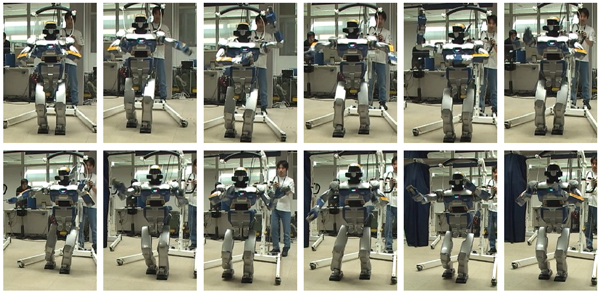|
Temporal Scaling of Upper Body Motion for Sound Feedback System of a Dancing Humanoid RobotTakaaki Shiratori, Shunsuke Kudoh, Shin'ichro Nakaoka, Katsushi Ikeuchi
|
Abstract
This paper proposes a method to model the modification of upper body motion of dance performance based on the speed of played music.
When we observed structured dance motion performed at a normal music playback speed and motion performed at a faster music playback speed, we found that the detail of each motion is slightly different while the whole of the dance motion is similar in both cases.
This phenomenon is derived from the fact that dancers omit the details and perform the essential part of the dance in order to follow the faster speed of the music.
To clarify this phenomenon, we analyzed the motion differences in the frequency domain, and obtained two insights on the omission of motion details: |
Results (mpg, 5MB) This video contains both result of the normal speed motion generation and simulation result of 1.2 times faster motion generation.  Comparison of left shoulder yaw angle trajectories of the original motion (red), generated by Pollard et al.'s method (green), and generated by our method (blue). (a): joint angle trajectories, and (b): joint angular velocity. (b.1) and (b.2) represent the zoomed-in graph of part (1) and (2) in (b), respectively. |
|
Top Home |